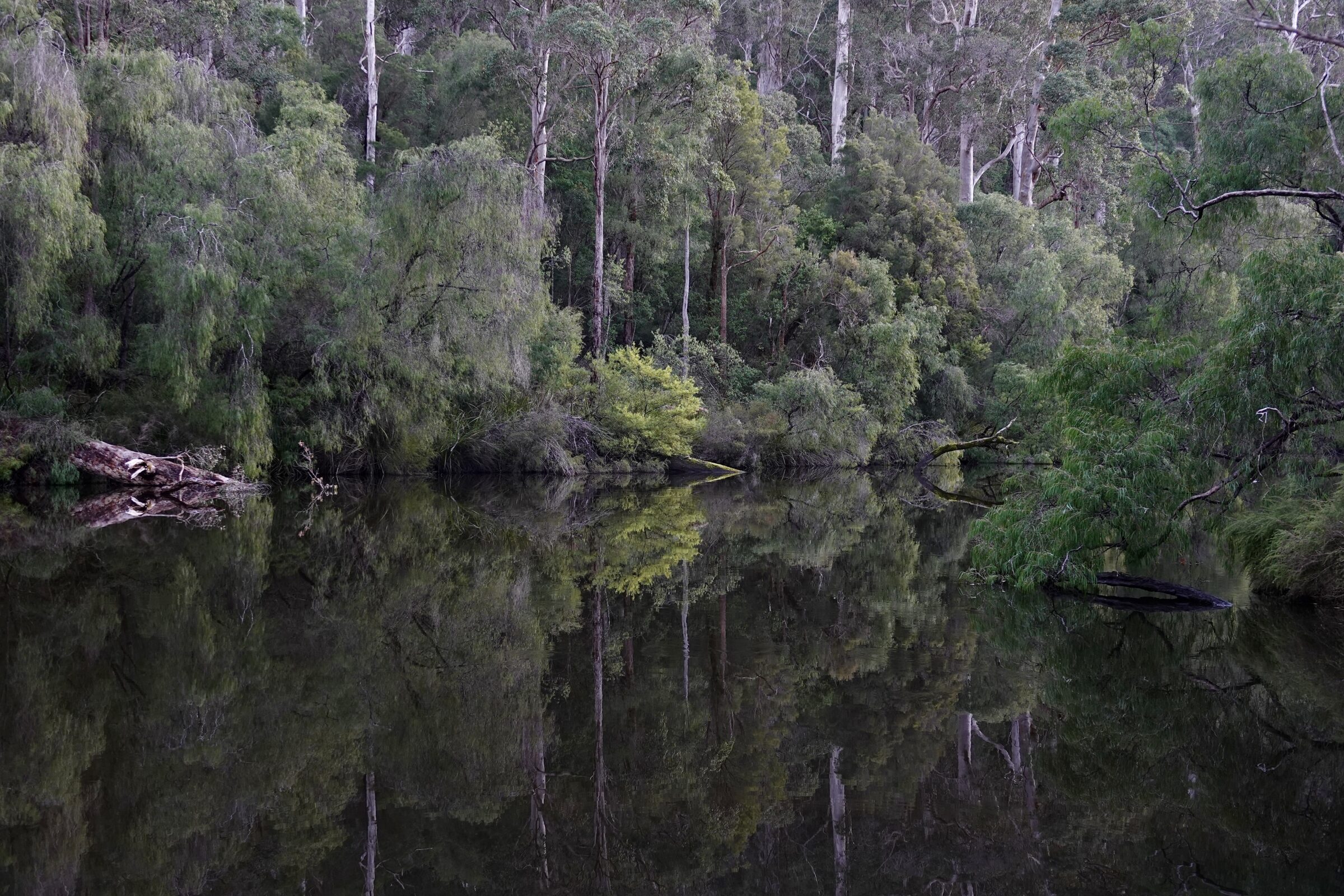For easy access to magnificent virgin Karri forest, there is no better place than Warren National Park.
Its main entry point is only a few minutes’ drive from Pemberton.
My beloved and I have been there many times.
No two times are the same, even when they are only hours apart!
Enormous Karri are by no means Warren National Park’s only beautiful trees, nor are trees its only beautiful element…as you can see in the featured image, taken at 3.45 pm on 28 July 2022.
(images are copyright Doug Spencer, all taken on 28 July 2022)
The Warren River is at its loveliest here, and the Heartbreak Trail gives ready access to prime riverside locations, including some which have (bookable, not “just turn up”) campsites.
As long as you know how to drive on steep, winding, dirt roads, the Heartbreak Trail is 2WD-friendly; buses and bus-like vehicles are forbidden.
As you can see in the featured image, when we returned to Warren NP – after a very pleasant winery lunch, a couple of kilometres the other side of Pemberton – the sky had greyed but the air was still almost still.
Before lunch, skies over the Warren had been mostly blue, and persons lucky enough to be where we were – on a favourite bit of riverbank – enjoyed a glorious natural light show.
As latest morning became earliest afternoon, my beloved and I were the only such lucky persons.
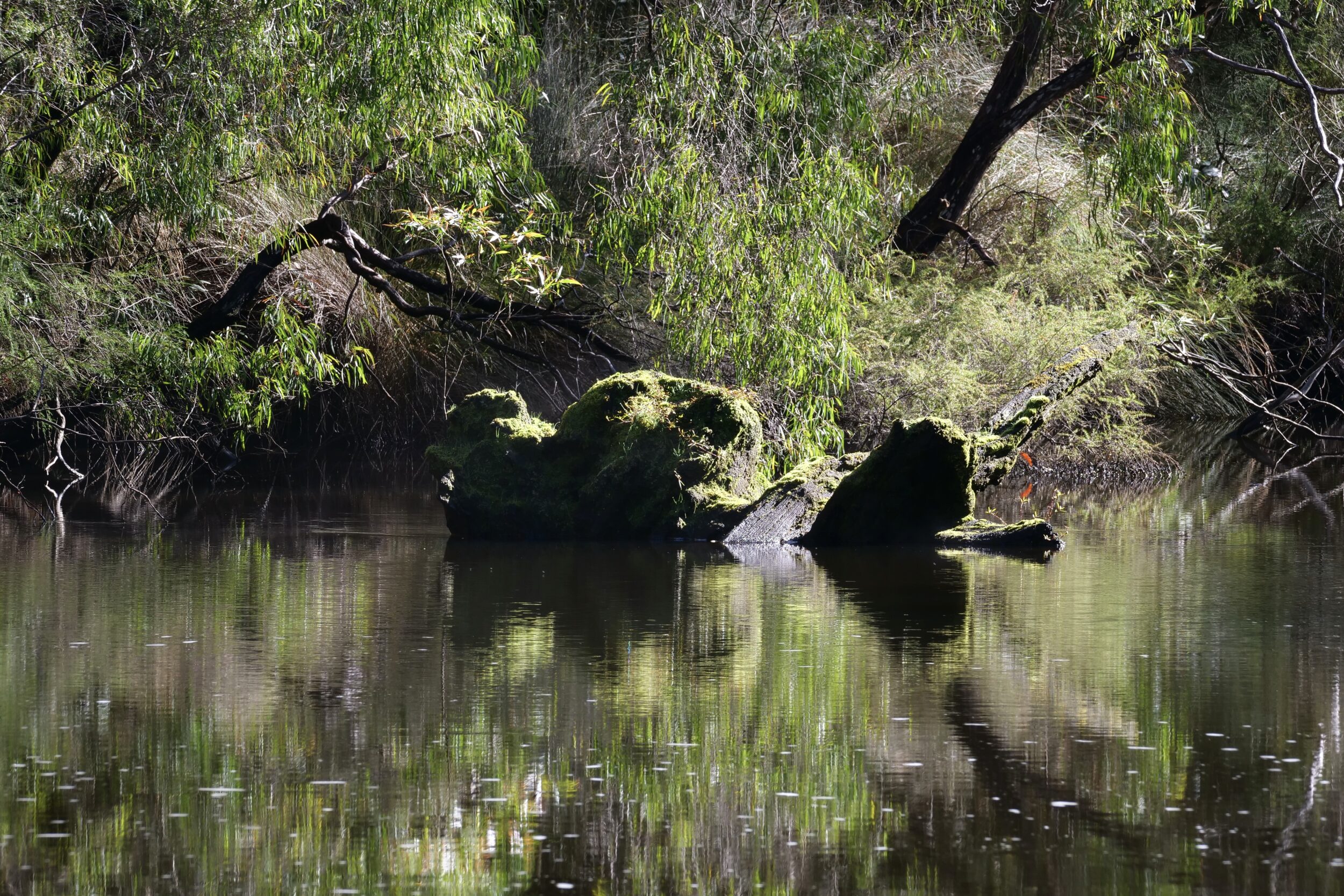
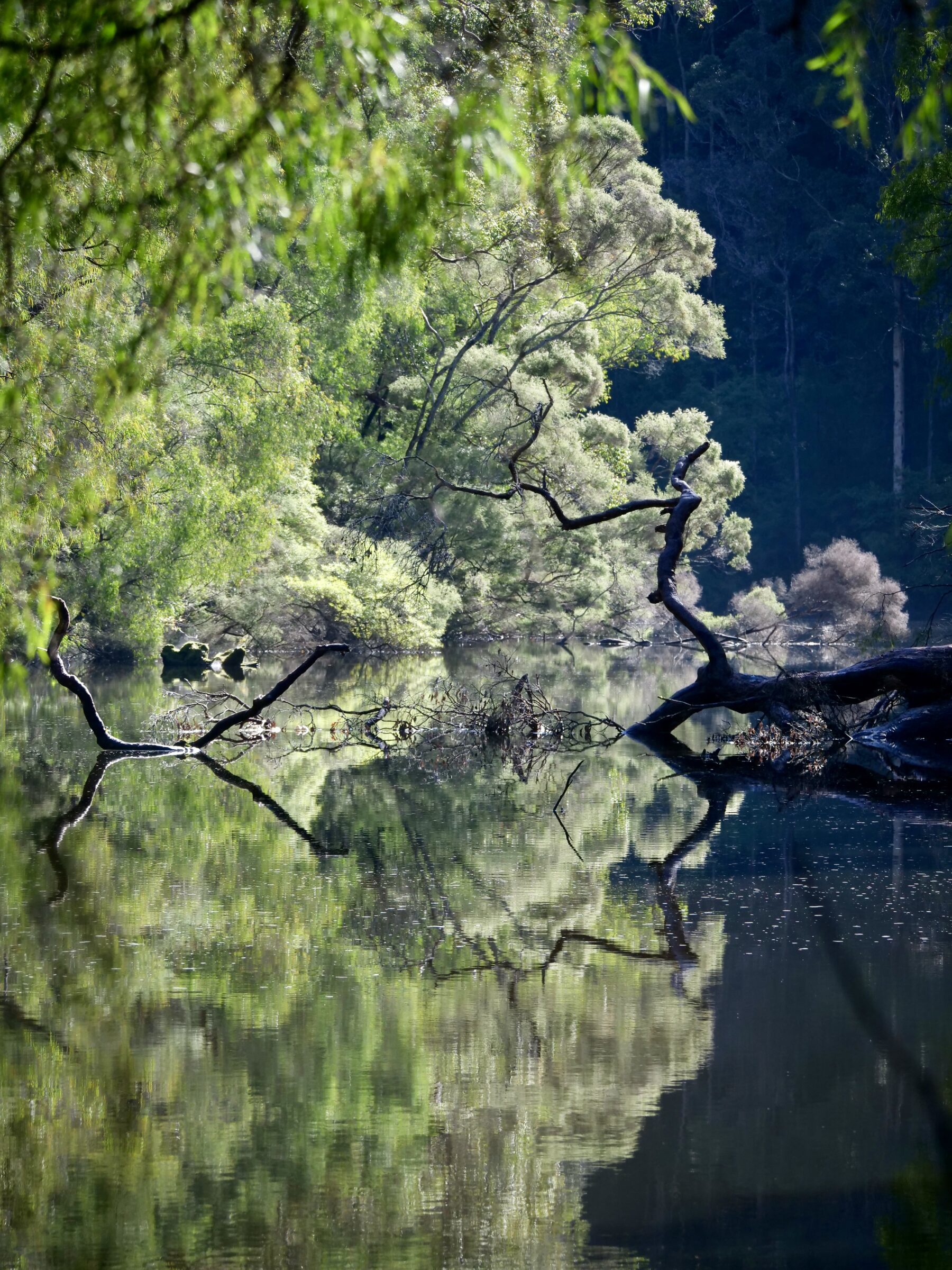
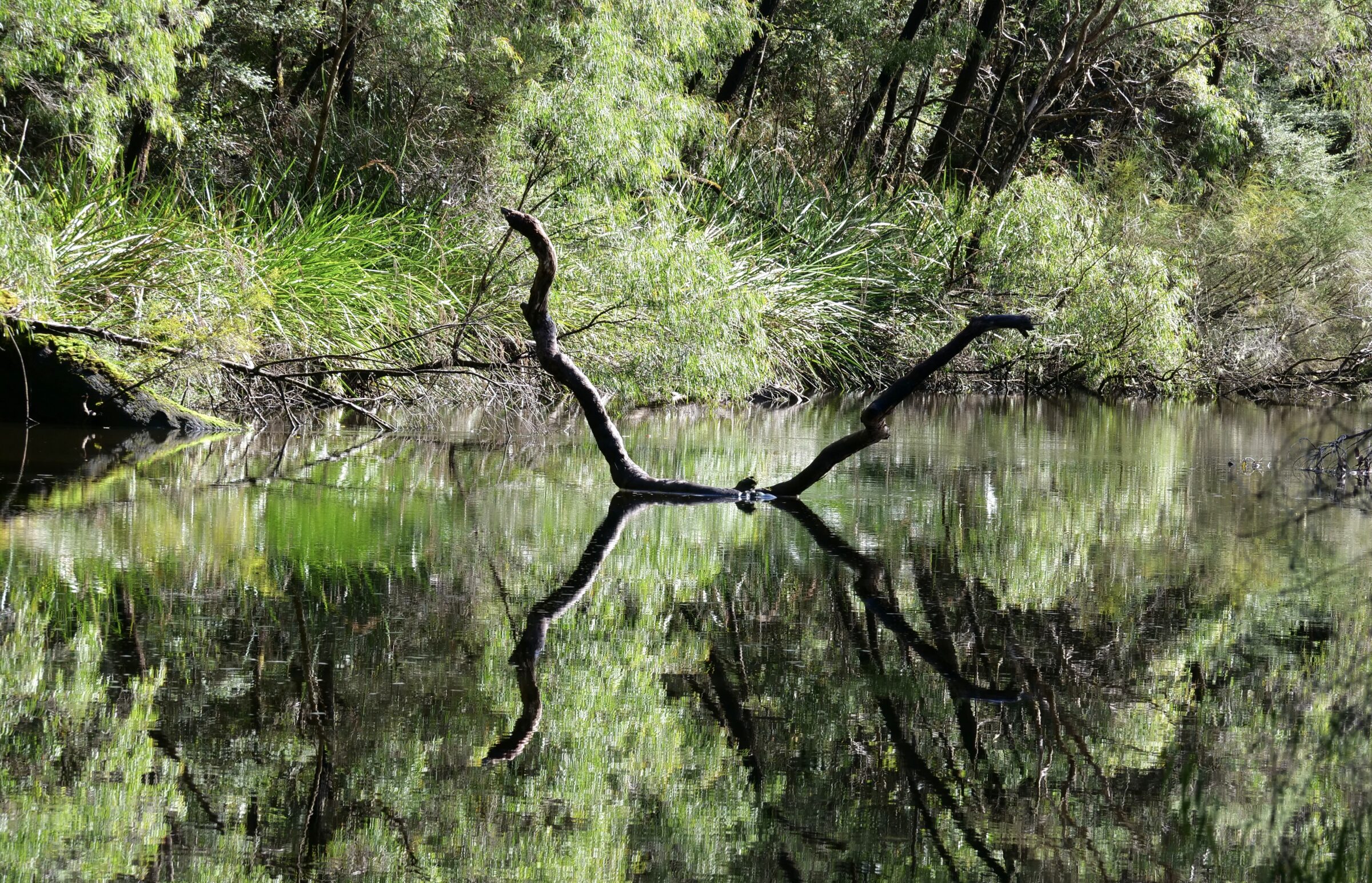
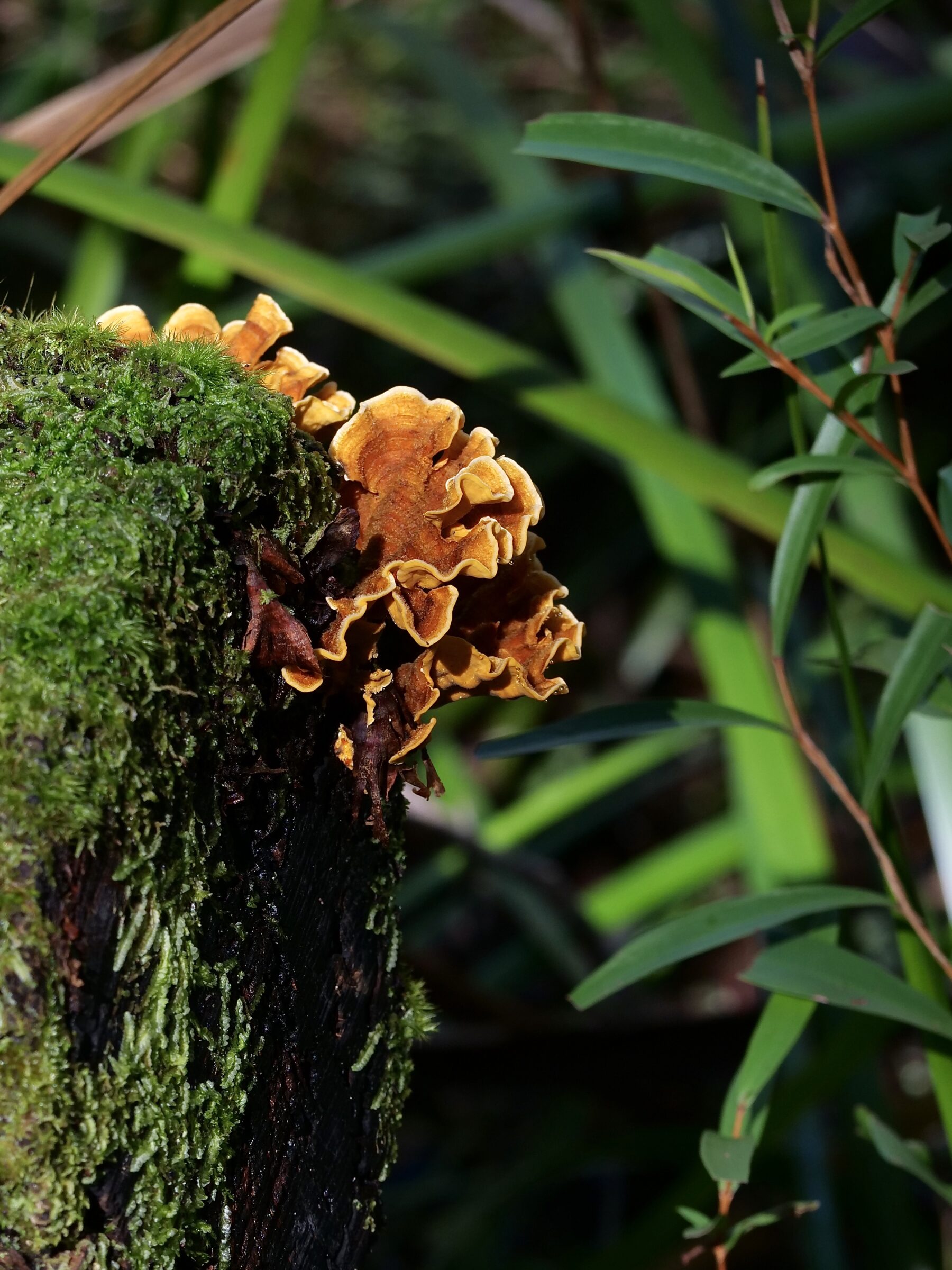
Much of the Heartbreak Trail shadows the course of the Warren River; it repeatedly descends almost to river-level, before again climbing high above the river.
As we headed out for lunch, it was evident the weather was going to change, well before day’s end.
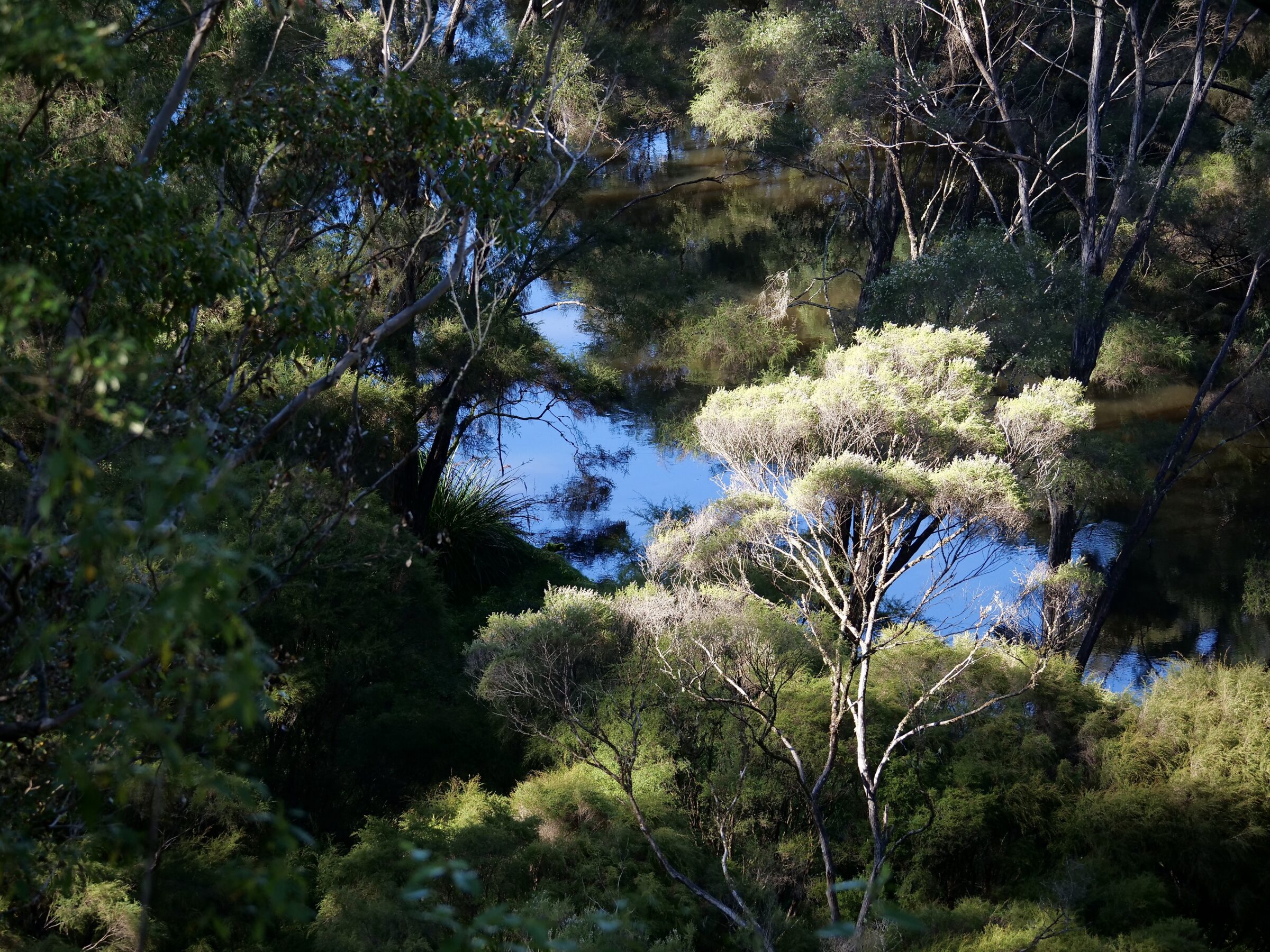
Ideal alfresco dining conditions persisted throughout our winery lunch, but substantial clouds were now rolling in.
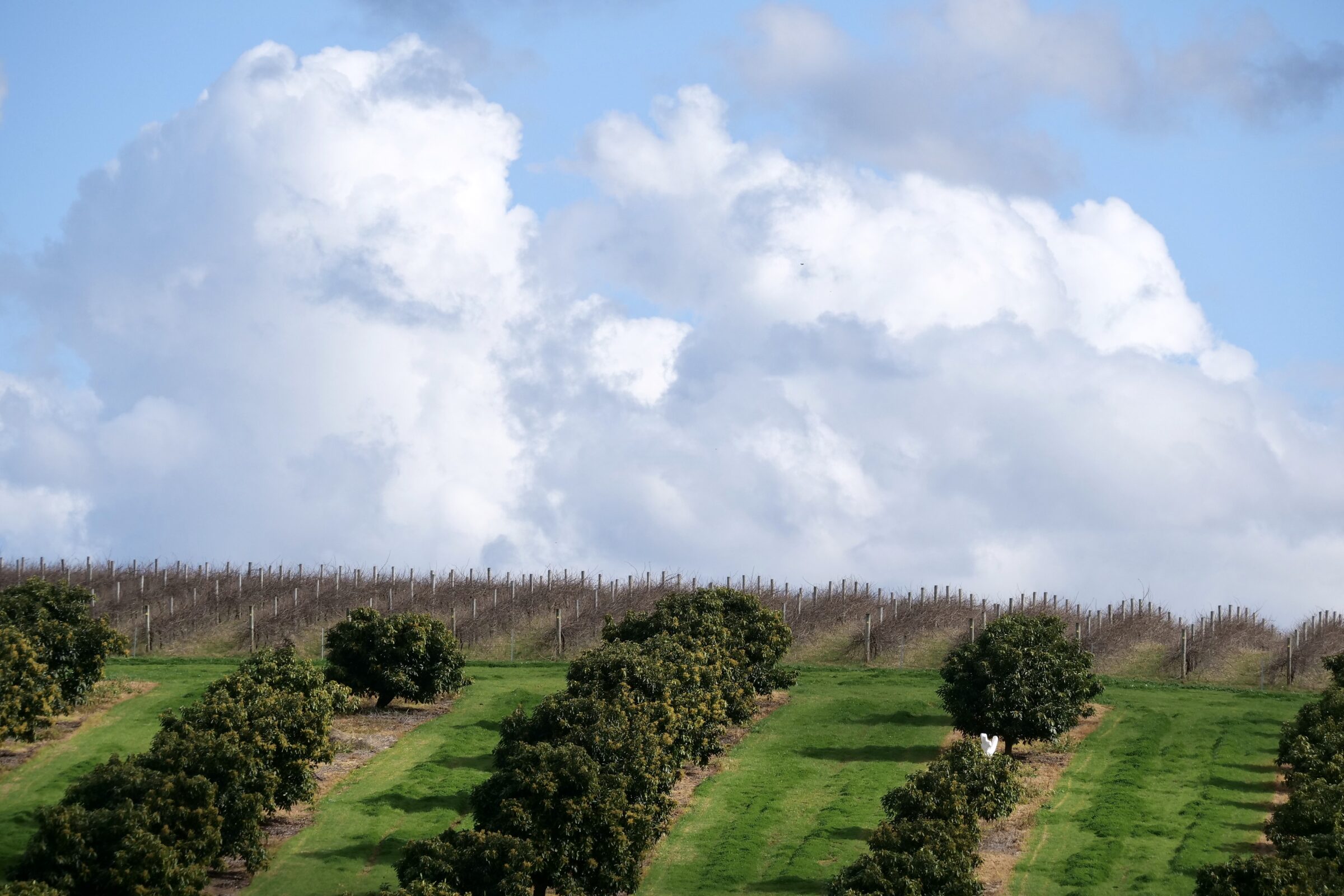
By the time we returned to the Warren River, the sky was fully grey.
The river and forest were no less beautiful than they had been three hours earlier, but their appearance was now much-altered.
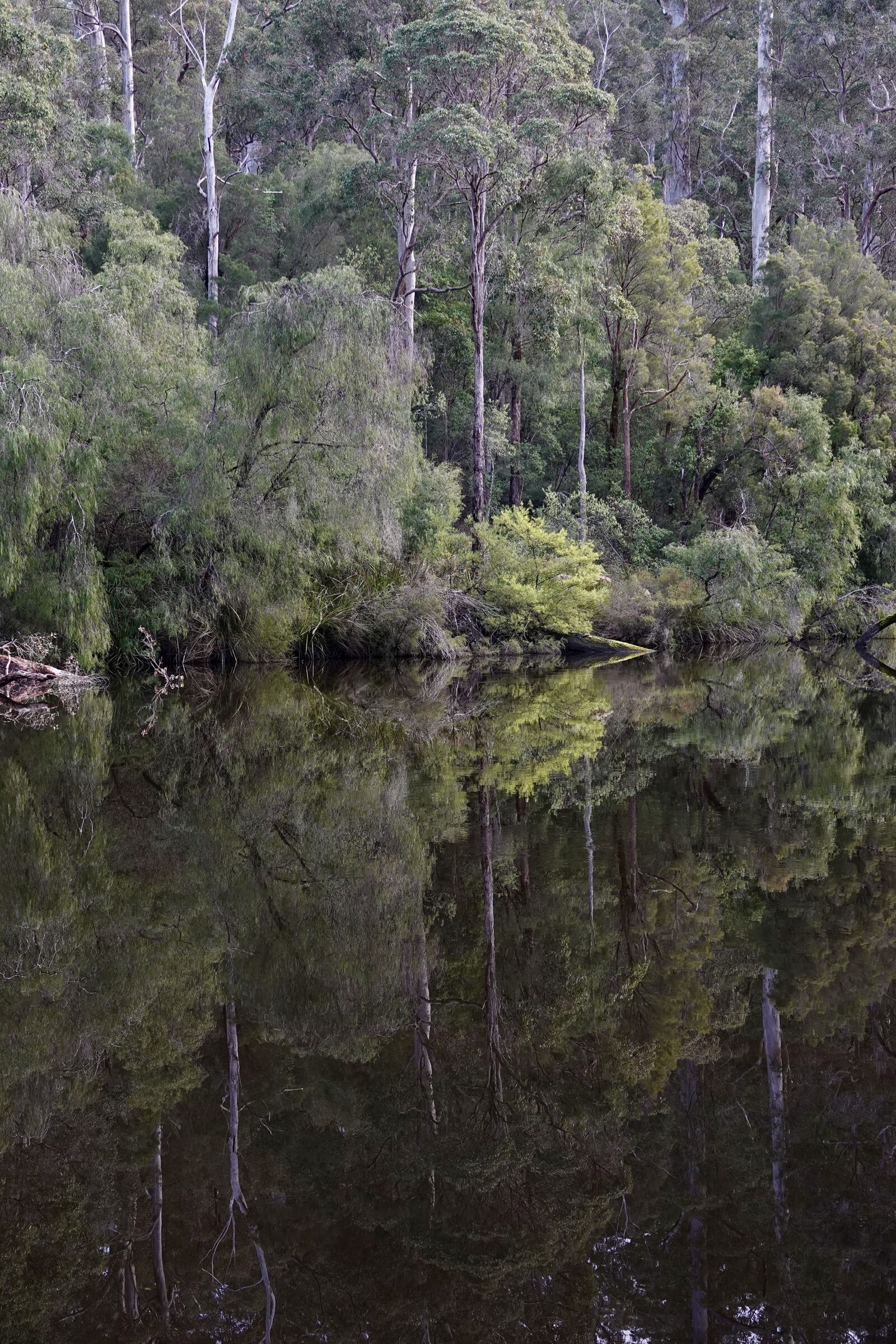
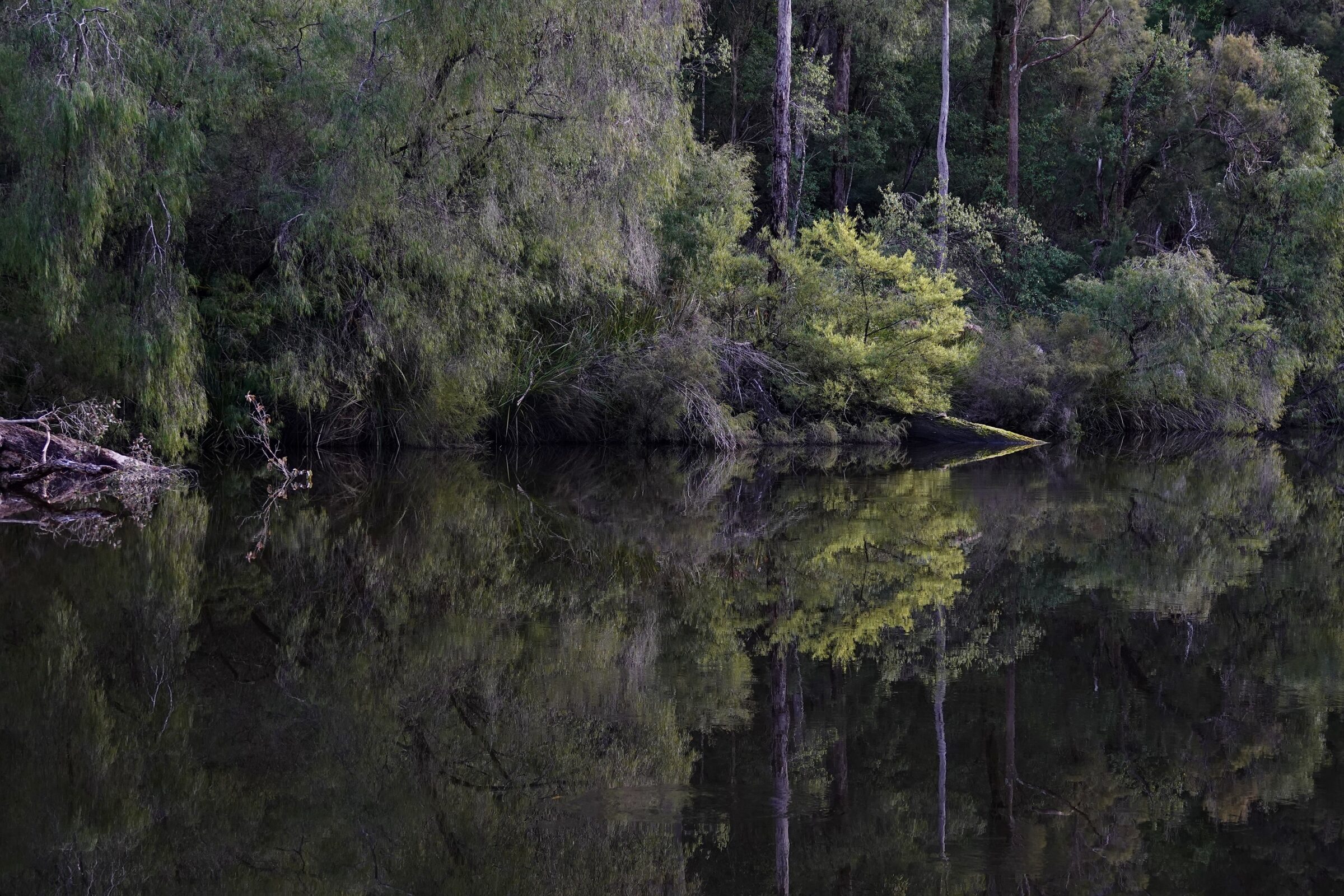
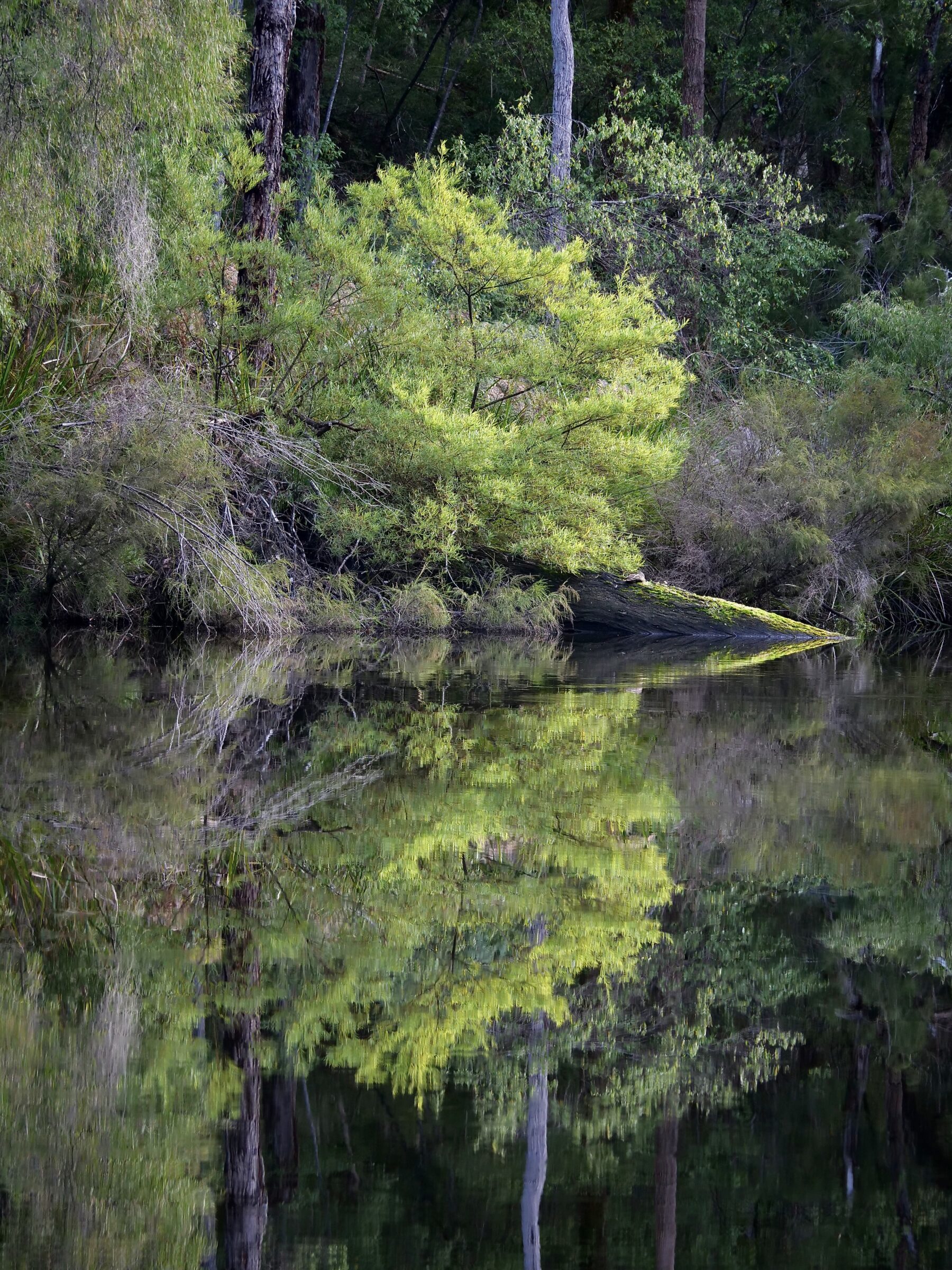
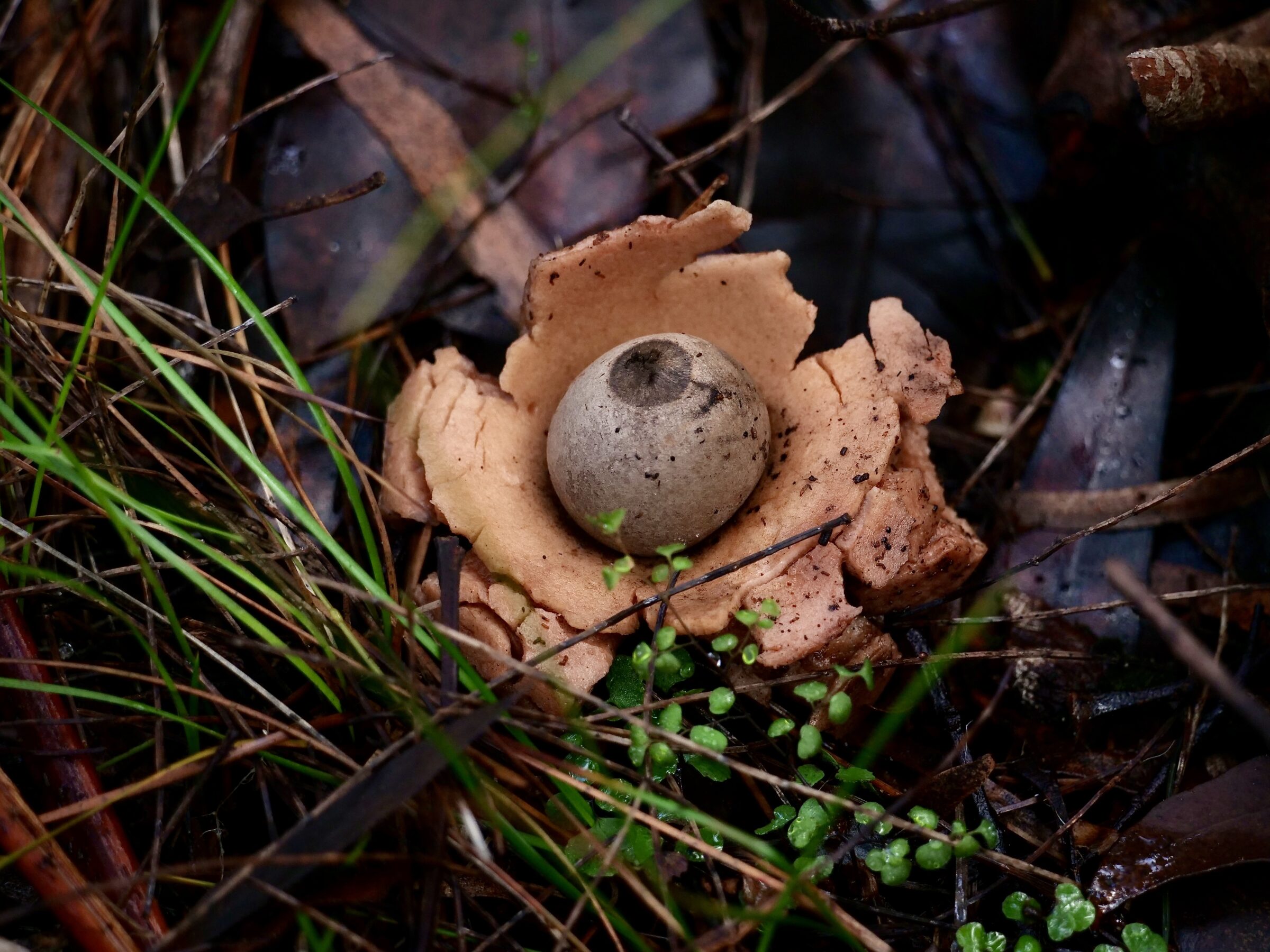
Click this for more information on Warren National Park.
STOP PRESS: UFO identified
My thanks to the friend who has just reliably informed me that it is a member of the family Geastraceae, commonly known as “earth stars”.
Mostly non-toxic but “inedible”, they are widely distributed, worldwide.
Click this to discover more about them, and to see where they have been noticed in Australia.
